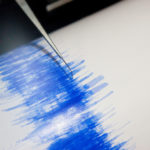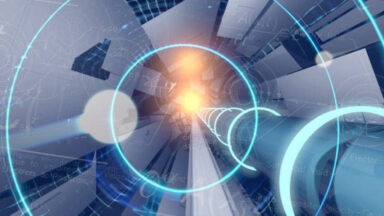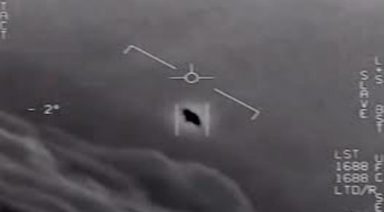What is a Stargate? Explore the Doorways of the Universe

Humans have long been obsessed with the possibility of alternate universes, and a way to instantaneously travel between this one and the next. This concept was popularized by the science-fiction TV show Stargate, and as recently as 2015, NASA admitted to having spent at least a decade researching access points to places outside our world, our universe, even beyond space and time as we know it.
The term Stargate means just that: an otherworldly door or portal to outside realms, hidden within Earth’s and space’s magnetic fields, waiting to transport the enlightened traveler to a place beyond current time limitations. While space seems to be the most likely location for these doorways to other universes, many places on planet Earth have also been attributed with special transportive capabilities, as well as noticeable shifts in energy, different frequencies, and unexplained lights or sounds.
But little to no scientific evidence has supported the theory of ‘wormholes’ in outer space, much less within the Earth’s atmosphere, until NASA’s Jack Scudder found a way to identify the elusive doorways floating between the Earth and the Sun.
Suspected Stargate Location in Space
Similar to an Einstein-Rosen bridge, or ‘worm-hole,’ the theory of formation of a space portal is that one occurs when space-time is distorted, either by the intense gravitational fields created by the collapse of a star, or by the mingling magnetic forces of the Earth and Sun crossing in space, enhanced by violent solar winds. Some of these portals are gaping holes for significantly sustained periods of time, while most are short-lived, yawning wide and re-closing several times in a day.
But Stargates can be difficult to find. Their reliable instability, elusiveness, and tendency to be tricky to spot can mean it will take years to locate one. There are no signs leading down this road, let alone pointing to it.
However, a plasma physicist, Jack Scudder, at the University of Iowa, has discovered a technique for spotting the elusive unpredictable portals. Scudder called these newly-discovered road signs X-Points, where the intersecting magnetic fields flowing between the Earth and the Sun propel vast amounts of charged particles out of the portal, easy to spot with the correct instruments and the right data.
Once Scudder was able to recognize the indications of a portal, he was able to find similar patterns occurring all over the place in the Earth’s atmosphere. Observed by NASA’s THEMIS spacecraft, they surround the Earth at a distance from 10,000 to 30,000 miles away.
Most of them seem to be located where the Sun and the Earth’s magnetic fields connect to form an unobstructed path, causing the area to pulse with charged particles that also create the Northern Lights and geomagnetic storms we sometimes witness here on Earth.
While not entirely certain what exactly these portals are, Scudder and his team remain optimistic that the answer is not beyond reach.
Stargates are a fascinating overlap of science-fiction and reality, and there are some who claim that we have access to portals here on Earth. Some locations are thought to be compass points on a map designed by sacred geometry and posses the ability to transport us to parallel universes. Among the earthly stargate sites, the most noted are the Stonehenge formation and the Bermuda Triangle, but several other locations are also attributed with being ancient alien portals.
Suspected Stargate Locations Around the World
Gate of The Gods
Where: Hayu Marca, Peru
Not far from the Lake Titicaca is one of the most well-known and widely-suspected portals to another world. The Gate of the Gods is an ancient site discovered in 1996 by a local tour guide, Jose Luis Delgado Mamani, and according to lore, the massive stone door was a portal through which heroes of the past entered to join their gods in the next life. Stories also have it that a few of those heroes were able to return through the same door, accompanied by their holy gods, to inspect the world they’d left behind.
The door itself is a large stone structure carved into the face of Hayu Marca mountain, 7 meters high and 7 meters wide, with a smaller recessed door at the base. Since this site is now protected by the Peruvian government as an ancient archeological site, there have not been any recent digs at this location.
Ancient Stone Arrangement
Where: Lake Michigan
In 2007, 40 feet below the surface of Lake Michigan, professor Mark Holley and his colleague Brian Abbot came across a stone formation while using sonar equipment to track shipwrecks. In addition to the familiar stonehenge-like construction, the underwater archeologists also discovered a boulder on which appeared to be a carving of a mastodon — a creature believed to be extinct for at least 10,000 years, which happens to coincide with a time when humans and and mastodons most likely populated the Midwest.
While most scientists believe this to be a petroglyph, some remain convinced that this could be an ancient, prehistoric portal, leading to another world. Currently in question is whether or not the massive stones came to rest there before or after the existence of the lake, and determining the authenticity of the mastodon petroglyph should provide a decent answer.
Sedona Vortexes/The Doorway of the Gods
Where: Sedona, Arizona
There are many places in the American Southwest that seem to offer some things a little beyond the ordinary. And none are quite like Sedona, Arizona, where the air and geology lends itself to feeling naturally “spiritually charged.” It’s difficult to argue — beautiful pillars of red-rock buttes, the scent of pines, “vortexes” of energy, and what’s known as the Doorway of the Gods brings a unique feeling to this place that differs from the surrounding countryside.
According to local legend, tunnels and gateways leading to other worlds exist all over Sedona. Star people, too, are purported to have entered and exited through the portals. The Doorway itself is a large archway of red rock at the top of the mountain. Some have seen blue light emanating from it, and there are even accounts of strange sounds like muted bells or thunder surrounding the rocks on days with clear blue skies.
The vortexes are also attributed with unique capabilities. Formed from energy similar to that found in the human body, the shift in energy can be felt as a subtle vibration, bringing those who experience it a sense of calm and rejuvenation as the outward pulses align with those that naturally occur in the human body. Many have noted feeling these subtle fluctuations in frequencies in the area, although conclusive scientific testing or investigation hasn’t confirmed anything yet.
Stargates: Fantasy or Reality?
Whether yawning wide in space or subtly concealed below a lake or rock outcroppings, the existence of Stargates is a subject that has fascinated many across the globe. Many of these curious people are scientists, who are unable to find any other explanation for either their findings or the stories of those who purportedly witnessed the powerful nature of a Stargate. The possibility of direct paths to other worlds, times, or even universes outside our own, is one that will continue to fascinate us for centuries to come.
Want more like this article?
Then don’t miss Ancient Civilizations on Gaia. Inside, we take you on a journey through Humanity’s suppressed origins and reveal the secret code left behind by our ancestors.
The Mystery of Torsion Fields

Russian scientist Nikolai Kozyrev was considered a prodigy. In 1925, at age 17, he published his first scientific paper, which focused on astrophysics and the atmosphere of the sun and other stars. It was met with great acclaim by other scientists.
At age 20, he graduated from the University of Leningrad with degrees in physics and mathematics. By age 28, he was a college professor and distinguished astronomer. To the science community at large, this promising young physicist disappeared for the next 11 years.
Nikolai Kozyrev: Russian Concentration Camps
While Korzyrev was enjoying a successful career as a professor and researcher, Josef Stalin, leader of the Soviet Union, was feeling threatened by scientists whom he perceived were independent thinkers. He was concerned they would see through his propaganda program. To prevent this, in 1936, he arrested them and sent them to concentration camps. Nikolai Kozyrev was among those imprisoned. There wasn’t much for him to do during the long 11 years he spent in the camps except to observe, meditate, and think.
During his imprisonment, Kozyrev was enthralled watching bacteria grow and noticed it grew in a perfect spiral. This led him to conclude that all life-forms likely draw off of an unseen spiraling source of energy. This energy is as important to maintenance and growth of life as are “eating, drinking, breathing, and photosynthesis.”
Kozyrev also concluded that this spiraling energy and growth is how time works, with the Earth orbiting in space by way of a “complex spiraling pattern.”
As the Earth rotates on its axis as it orbits the sun, it releases energy, or torsion waves, that propel it through space. The torsion waves travel at speeds faster than the speed of light. These torsion fields are actually “waves of time” which also cause ripples in gravity. Indeed, some scientists now believe that “electromagnetism, gravity and torsion waves are all members of the same family; they are just different forms of ether vibrations.”




































